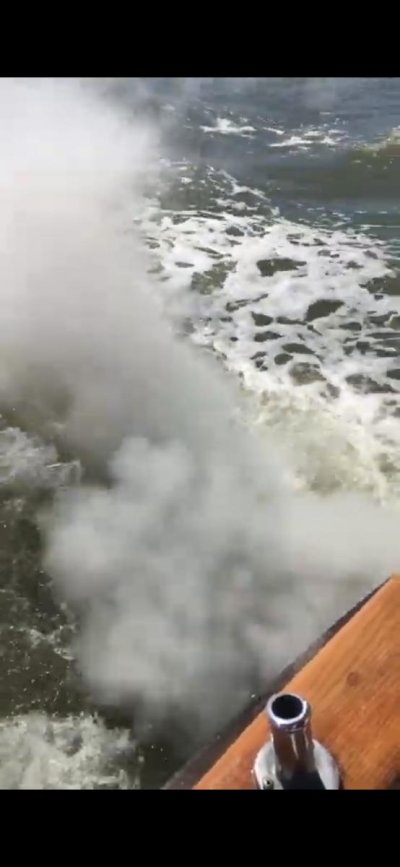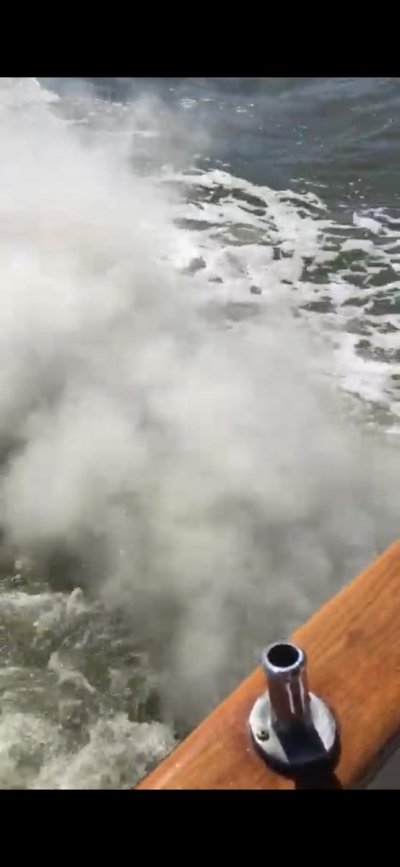Waterant
Senior Member
Hi guys,
I can use some help to troubleshoot darer gray smoke from the exhaust on a new to us 41' trawler.
Engine is industrial Yanmar 145hp with a turbo born in 1987
When transmission is not engaged, I can give it a throttle to 2500rpm which is continuing duty Rpm for this engine and it's smooth and happy, no visible smoke.
When we are underway, anything over 1500rpm causes gray smoke and I did not try 2000 or over because the smoke does not look right and getting worse with more throttle and I can feel vibrations are increasing.
Am I correct assuming the engine is overloaded?
Maybe by incorrectly sized prop?
Can a missaligment in the shaft causes the overload?
Can it be a turbocharger not working correctly under the load or it engages with high rpm regardless of the load? I know nothing about turbochargers - this is a new kind of animal to me.
Anything you recommend to check first?
We are in the remote areas of Nova Scotia now and access to a mechanic is limited.
Thank you
Anton
I can use some help to troubleshoot darer gray smoke from the exhaust on a new to us 41' trawler.
Engine is industrial Yanmar 145hp with a turbo born in 1987
When transmission is not engaged, I can give it a throttle to 2500rpm which is continuing duty Rpm for this engine and it's smooth and happy, no visible smoke.
When we are underway, anything over 1500rpm causes gray smoke and I did not try 2000 or over because the smoke does not look right and getting worse with more throttle and I can feel vibrations are increasing.
Am I correct assuming the engine is overloaded?
Maybe by incorrectly sized prop?
Can a missaligment in the shaft causes the overload?
Can it be a turbocharger not working correctly under the load or it engages with high rpm regardless of the load? I know nothing about turbochargers - this is a new kind of animal to me.
Anything you recommend to check first?
We are in the remote areas of Nova Scotia now and access to a mechanic is limited.
Thank you
Anton



